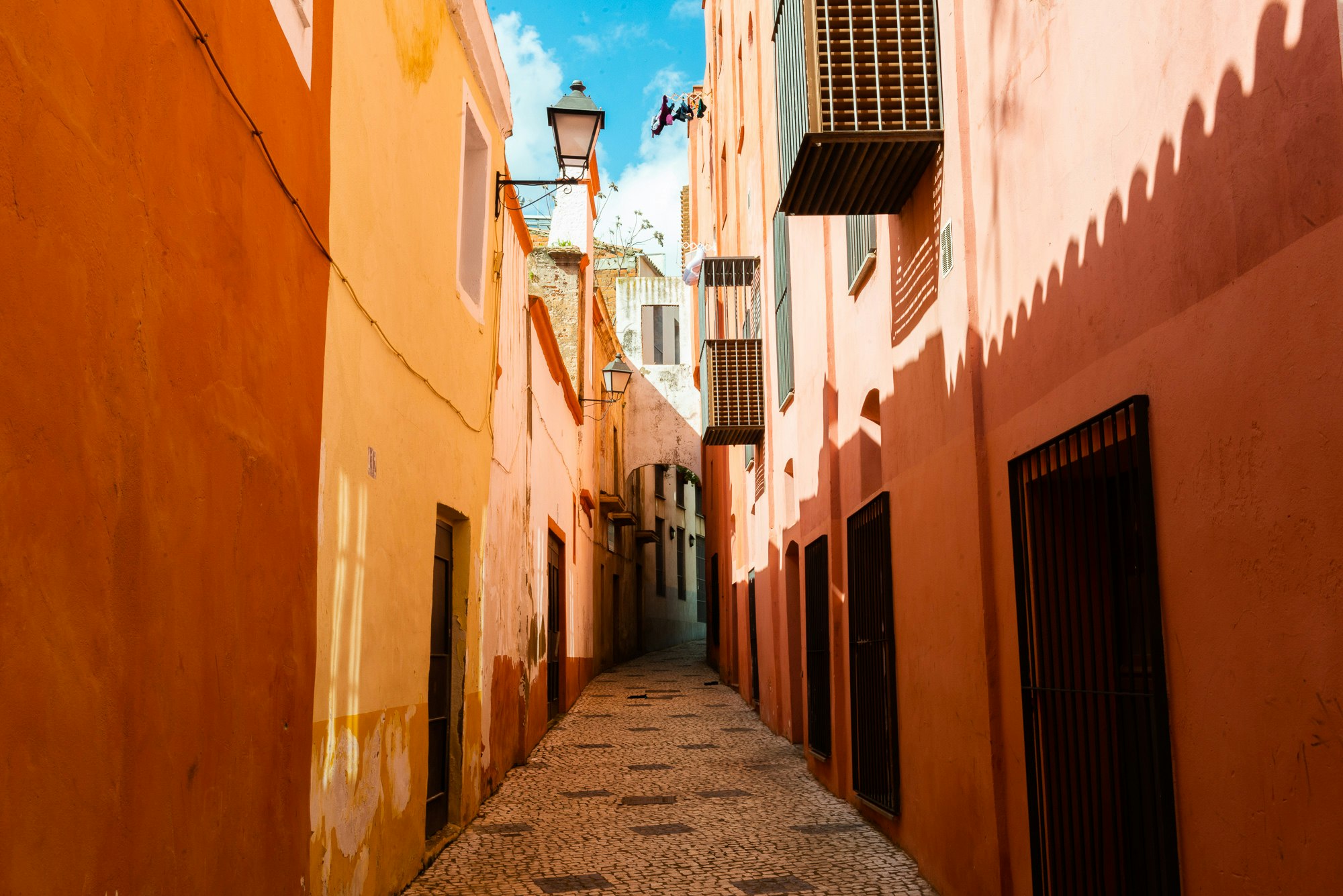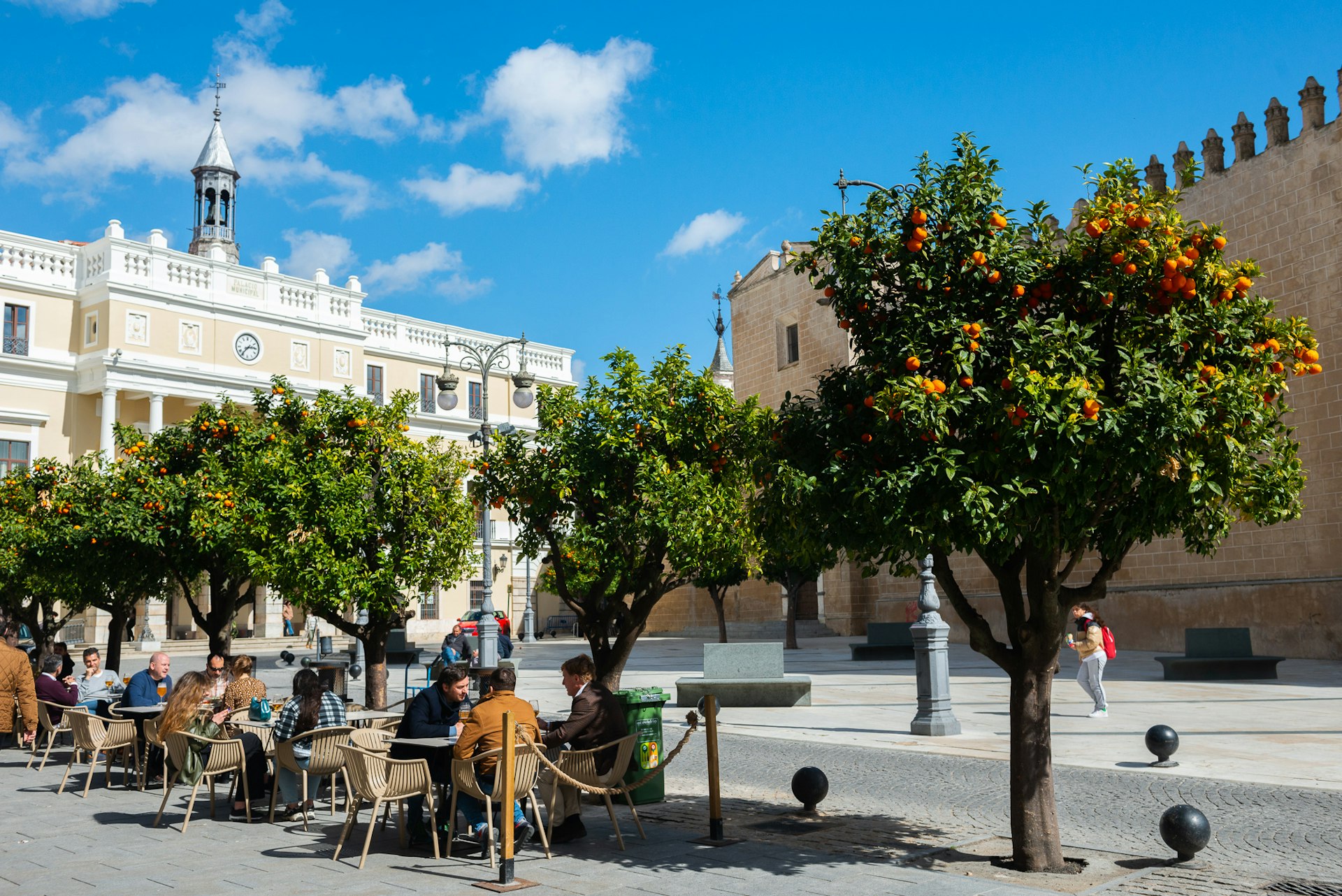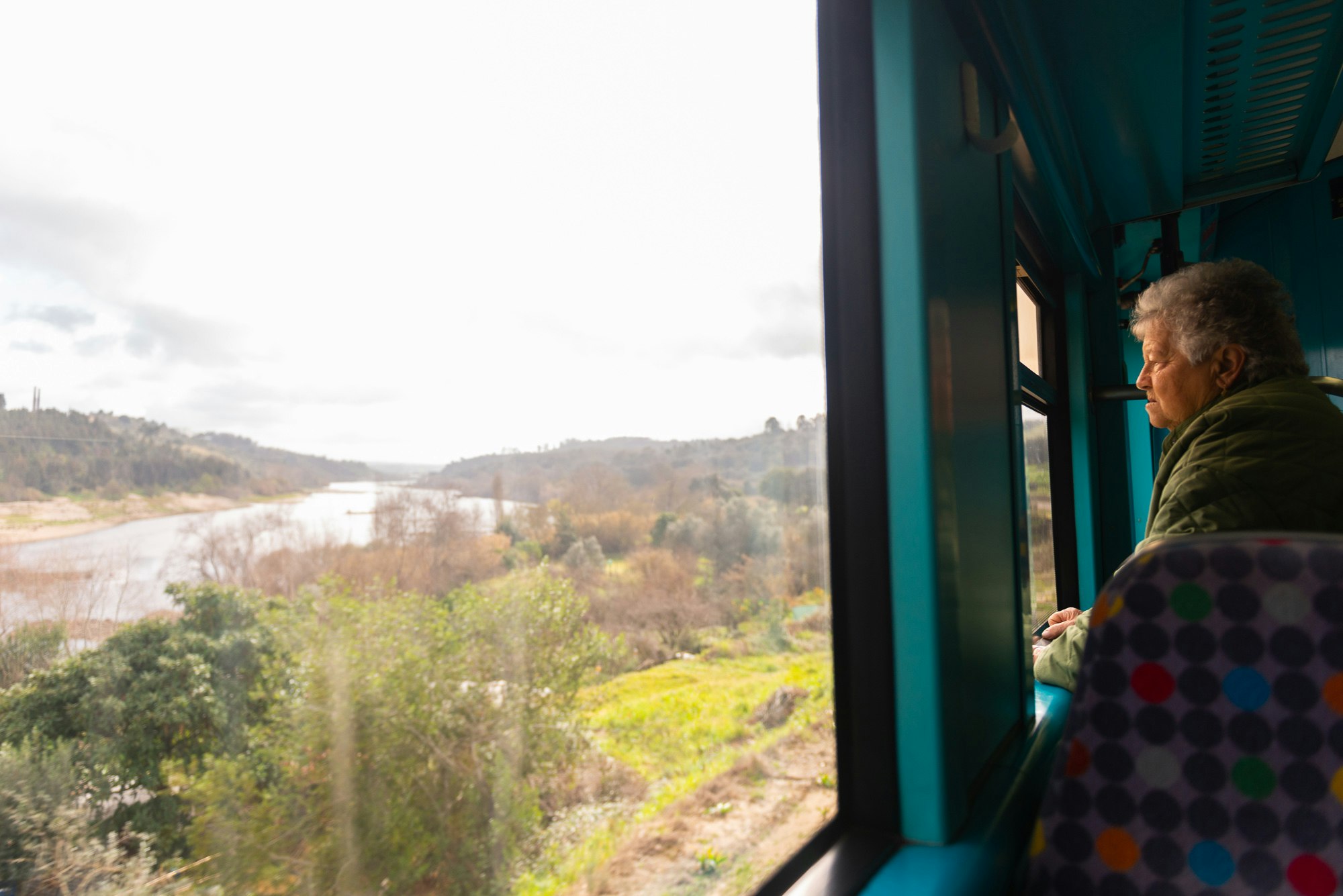Our slow travel series explores how you can take more mindful journeys by train, boat, bus or bike – with tips on how to reach your no-fly destination, and what to see and do along the way. We asked Austin Bush to report on his decidedly non-express train journey from Lisbon to Madrid.
In the good old days, Lisbon and Madrid used to be linked by a direct, overnight train: board in Lisbon at night and the next morning, wake up in Madrid.
Unfortunately, the pandemic did away with this route – yet it still remains possible to travel between these two dynamic cities by rail. While the current route is not as direct or convenient as the late overnight train, if you’ve got time and a desire to explore, the journey allows views of the charming Portuguese countryside, plus a layover in a little-visited Spanish city.
Lisbon to Entroncamento
Although it’s not immediately apparent on the ticket, the Portuguese leg of the trip is not direct, and requires a transfer in the rail junction town of Entroncamento. I board a train that departs from Lisbon’s Santa Apolónia station at 7:45am – a commuter train, which means no assigned seating nor cafe car (I make sure to eat at the station before boarding). We depart, and the train hugs the left bank of the Tagus River, which narrows as we head north, the landscape shifting from industrial-feeling suburbs outside Lisbon to marshy fields after an hour or so. Around Vale de Figueira, the view changes to rolling hills, oak trees and the occasional vineyard estate. Pulling into Entroncamento around two hours later, I only have a few minutes to transfer to my next train.
Entroncamento to Badajoz
Arriving in Entroncamento at 9:28am, I board my ride to the Spanish border town of Badajoz: a two-carriage commuter train that’s so bright green it’s like a cartoon. On this humble train, I enjoy the most beautiful leg of the trip as we rattle through a landscape that is typically Alentejo (the region considered Portugal’s rural heartland): rolling hills populated by cattle and oak trees, whitewashed villages, former farmhouses, the occasional bullfighting ring and even an abandoned castle. The train is nearly empty, and I’m able to stretch my legs and walk around the caboose to take photos at will. After nearly three hours, we cross a tiny, unremarkable stream – and, without ceremony, we’re in Spain. Badajoz’s train station, the location of my next and final transfer, is only a few minutes away.

An interlude in Badajoz
If your train from Entroncamento is on time, it’s possible to make an almost direct transfer to a Madrid-bound train. But I wanted the chance to have lunch and explore Badajoz, so I opted for a later departure, giving me nearly four hours to burn in this historic city.
Unfortunately, since there are no luggage-storage facilities in Badajoz’s train station, I have to walk into town with my bag. Badajoz’s train station is in the new part of town, just west of the Guadiana River, a 15-minute walk to the more interesting old town. I exit the station, head south on Avenida Carolina Coronado, cross the 15th-century Puente de Palmas footbridge and enter town via the Puerta de Palmas, a 16th-century fortification.
I arrive at around 2pm – exactly when museums such as the Museo de Bellas Artes de Badajoz and the Museo Extremeño e Iberoamericano de Arte Contemporáneo take their daily 2pm to 5pm siesta. But lunch is just kicking off at this hour, and there are a few interesting options in town. I opt for tortilla española and morcilla (blood sausage) at La Corchuela, an ancient, bullfighting-themed bar and restaurant located in the heart of the old city. (I also considered something totally different, the almost space-age Galaxia, more upscale and located slightly farther outside the city center.)

After lunch, I explore Badajoz’s ancient center on foot, taking in the scene at Plaza de la Soledad and the Plaza de España, the over-the-top architecture such as the Giralda de Badajoz and the narrow paths that lead to the Plaza Alta and its trippy Moorish architecture. I ultimately emerge at the northern end of town, at the Alcazaba. This 12th-century Moorish citadel is the largest in Spain, and today functions as both archaeological site and public park. It’s possible to explore the gardens within the walls, as well as walk along the ramparts, which offer great views of town and the river.
From the Alcazaba, I return to the river and cross the Puerta de Palmas back to the train station to catch my final train.
Badajoz to Madrid
At 5:36pm, I board for Madrid. Operated by Renfe, this is a modern, high-speed train with comfortable seats equipped with power outlets, an onboard movie and cafe car. Slicing through Spain’s Extremadura region, the view takes the form of seemingly endless olive plantations with the rocky Sierra de Gredos forming a backdrop; at Mérida’s train station, I spot the remains of a Roman aqueduct. It gets dark and I fall asleep, only waking as we pull into Madrid’s hectic Atocha station at 10pm. Approximately 13 hours after having boarded my first train in Lisbon, I have reached my destination.

How to make it happen
Tickets
Trains are operated by two different, unlinked entities: Comboios de Portugal and Renfe. This means you’ll need to book two sets of tickets for the two countries – a rather confusing task.
Food and drink on the journey
The trains on the Portuguese side are commuter or regional trains and don’t have cafe cars. The Badajoz–Madrid train has a dining car that serves basic bites and drinks. There is a cafe at Badajoz’s train station that serves simple fare.
Facilities
There are no left-luggage lockers in Badajoz’s train station; plan accordingly. Wi-fi is not available in either in the stations or on the trains.
Strikes
In the last couple years, strikes led by employees of the state-run Comboios de Portugal (CP) have led to the cancellation of as many as half the country’s trains on multiple occasions. Before buying tickets, do a quick search or check CP’s website to see if a strike is in progress or about to happen.
